Samsung Galaxy Express 2 Preview
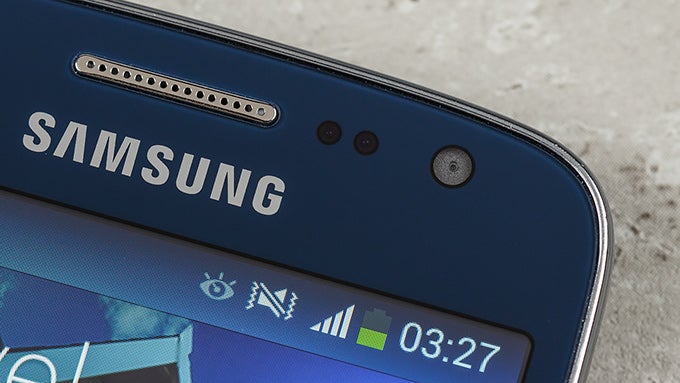
Introduction
At first, the Samsung Galaxy Express 2 looks like a myriad of Android smartphones by Samsung that you can barely tell apart. A typical plastic device with that signature me-too Samsung look, it aims to offer good value for the money with a relatively modern version of Android, 4.2 Jelly Bean, a 4.5-inch screen, and a dual-core processor.
Coming with the feature-packed Samsung TouchWiz user interface, a 5-megapixel camera capable of recording 720p videos and expandable storage, it checks all our bases for an affordable phone. Is it all as good as it looks on paper, though, or are there some other hidden quirks that you should know about? Let’s find out.
Design
The Galaxy Express 2 is a device of reasonable size and a solid build, but it's made out of plastic and its design is not very original.
Overall, the second generation Galaxy Express is a device of reasonable size, heft and thickness. With its healthy-sized 4.5-inch display, it is not too small, nor too large, and easily fits in a pocket. It’s definitely on the chubby side, though, measuring 9.8mm (0.39”) thick. While that’s not a dealbreaker for us, it’s a thing to consider, and we do wish the handset was at least just a bit thinner.
The Galaxy Express 2 features the typical Samsung style that the company first debuted with the Galaxy S III back in 2012. In case you are wondering what we mean by saying ‘typical’, we’re referring to the glossy plastic body, pebble-like form with curved edges, silver plastic sidings made to look like aluminum, and the single large home key encircled with two capacitive buttons. On the left side of the phone is a volume rocker, and on the right is the lock key.
Overall, the Galaxy Express 2 leaves an impression of a solidly built phone. It’s practical and nicely put together, but nothing more.
The Galaxy Express 2 features the typical Samsung style that the company first debuted with the Galaxy S III back in 2012. In case you are wondering what we mean by saying ‘typical’, we’re referring to the glossy plastic body, pebble-like form with curved edges, silver plastic sidings made to look like aluminum, and the single large home key encircled with two capacitive buttons. On the left side of the phone is a volume rocker, and on the right is the lock key.
Overall, the Galaxy Express 2 leaves an impression of a solidly built phone. It’s practical and nicely put together, but nothing more.
Display
The Express 2 has a reasonably sized 4.5" display with decent sharpness.
The Galaxy Express 2 features a 4.5-inch IPS LCD display with a resolution of 540 x 960 pixels. We’ll abstain from passing a judgment about the screen quality since we have a non-final unit, but our initial feelings are that this is a better than average display with very vivid, rich color that does not look washed out. The screen is also fairly sharp for its class at 245ppi, so you’ll hardly see any pixelization except when reading tiny text.
One thing that Samsung annoyingly omitted in the Express 2 is a light sensor. What this means is that the screen cannot automatically adjust its brightness, so you’d need to manually set it lower or higher depending on the conditions.
One thing that Samsung annoyingly omitted in the Express 2 is a light sensor. What this means is that the screen cannot automatically adjust its brightness, so you’d need to manually set it lower or higher depending on the conditions.
Interface and Functionality
The Galaxy Express 2 runs on Android Jelly Bean with TouchWiz on top. It is packed with Samsung's 'Smart' features and signature apps like ChatON, S Calendar, S Planner and others.
The Galaxy Express 2 features Android 4.2.2 Jelly Bean with Samsung’s TouchWiz ‘Nature UX 2.0’ skin on top. Samsung’s skin is packed with all sorts of ‘smart’ features like air gestures and eye tracking that some may like, and others may never use. Fact remains that the UI is the absolute champion in terms of richness of built-in features, so you’ll definitely have choice in that regard. TouchWiz is also colorful, almost too cheerful, with its cartoony visuals and icons.
Basic functionality is well covered with the core phone app easily integrating with Google’s cloud contacts. Samsung adds swipe gestures to your contact list allowing you to call or text someone by just swiping left or right on the contact’s name. The keyboard is well spaced and easy to type on, but it lacks some language layouts. Samsung is also shipping this with its home-brewed ChatON, S Planner, S Memo, S Translator and S Voice apps bundled right in.
Processor and Memory
A dual-core Snapdragon S4 Plus chip provides a smooth experience, but might fall a bit short with the most intense games, while storage is not plentiful, but you can expand it via microSD cards.
Our initial impressions are that we’re generally pleased with the smoothness of the Galaxy Express 2 performance. We’ll reserve our final judgment for the review, but we only expect performance to become even smoother in the final version.
In terms of hardware, the Express 2 runs on a Snapdragon S4 Plus MSM8930 processor. It’s a 28nm LP dual-core chip running at up to 1.7GHz (those are turbo frequencies, not nominal) with 1.5GB of single-channel LPDDR2 RAM. It features the Adreno 305 graphics chip, and our initial pre-production device had no issues running some of our favorite casual games without much of a slowdown.
On paper, the handset comes with 8GB of internal storage that you can expand via microSD cards of up to 64 gigs. TouchWiz, however, is eating up nearly half the built-in memory, so you end up having around 4 gigs actually available.
Internet and Connectivity
The Express 2 comes with 4G LTE connectivity, which is a bit of a rarity on such an affordable device. Fast to load pages, it comes with both Samsung's custom Android browser and mobile Chrome.
The phone ships with Samsung’s custom Android browser and Google’s mobile Chrome on board. Both get the job done well, but we prefer Chrome for its better interface and cross-device syncing capabilities. Scrolling and zooming around was fairly smooth, and surfing in general was a pleasure on our preproduction unit.
The Galaxy Express 2 features 4G LTE connectivity, and that’s great to see in such an affordable device. It can also fall back to 3G speeds in places where there’s no coverage, and other connectivity options include A-GPS, Wi-Fi and Bluetooth 4.0. NFC support is not present.
Camera
The phone comes with a 5-megapixel auto-focus camera capable of recording 720p videos. Samsung also brings the same great camera interface as in its top-shelf Galaxy S4 and Note 3 phones.
The second-gen Galaxy Express has a 5-megapixel auto-focus camera with a single LED flash on the back, and a VGA shooter on the front.
The camera app interface is great. Samsung uses the same camera UI found in its top-shelf Galaxy S4 and Note 3 devices, with all the bells and whistles of shooting modes like Panorama, Sports, Night and others. There is also a ton of other manual settings like ISO, exposure, and metering to adjust.
We won’t comment on the actual camera speed, and quality of the images just yet, as what we have on our hands is a non-final unit, but we’ve shot some sample stills and footage to give you a general idea about what you can expect.

Multimedia
The phone comes with a great video and music players, but Samsung still has room to improve the loudspeaker in the final version of the device.
The Galaxy Express 2 features a reasonably sized display, so watching video and browsing through images is a pleasure. Samsung’s built-in video player plays back all common formats with ease, but even if you have trouble with a rare codec, you can always head to the Play Store to find a media player that will support it.
For music, you have Google Play Music and Samsung Music on board. We like both, but Samsung’s music player has a bit more settings, and it supports features like folder-based file manager for your music, something that the Google app lacks.
We also like Samsung’s Gallery app with its two-column design showing your albums on the left, and your images on the right - browsing around images is quicker than on single-column designed apps. The gallery also has a pretty rich image editor allowing you to frame images, annotate them, rotate, crop and add filters, of course.
The Galaxy Express 2 has its loudspeaker located on its back, next to the rear camera, so it can get muffled when you lay the phone on its back.
With an expected retail price of around $200 (€200), the Galaxy Express 2 competes in the hugely crowded Android low to mid-range. With 4G LTE on board, however, it’s got the one big advantage of fast connectivity that many other phones in its class lack.
Our initial feeling is that it is also a good device all around - we like the screen, and the performance seems adequate. While we are not so enamoured with the generic plastic design of the Galaxy Express 2, we do think that it is on the right track to delivering good bang for the buck. All it takes is a final layer of polish that Samsung is probably already putting on before releasing the device to store shelves soon.

For music, you have Google Play Music and Samsung Music on board. We like both, but Samsung’s music player has a bit more settings, and it supports features like folder-based file manager for your music, something that the Google app lacks.
We also like Samsung’s Gallery app with its two-column design showing your albums on the left, and your images on the right - browsing around images is quicker than on single-column designed apps. The gallery also has a pretty rich image editor allowing you to frame images, annotate them, rotate, crop and add filters, of course.
The Galaxy Express 2 has its loudspeaker located on its back, next to the rear camera, so it can get muffled when you lay the phone on its back.
Expectations
With an expected retail price of around $200 (€200), the Galaxy Express 2 competes in the hugely crowded Android low to mid-range. With 4G LTE on board, however, it’s got the one big advantage of fast connectivity that many other phones in its class lack.
Our initial feeling is that it is also a good device all around - we like the screen, and the performance seems adequate. While we are not so enamoured with the generic plastic design of the Galaxy Express 2, we do think that it is on the right track to delivering good bang for the buck. All it takes is a final layer of polish that Samsung is probably already putting on before releasing the device to store shelves soon.

Follow us on Google News

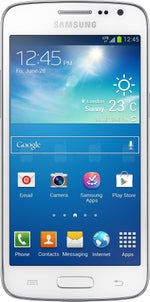
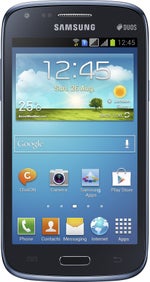
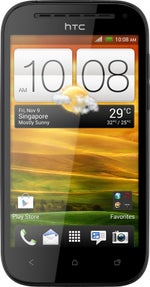
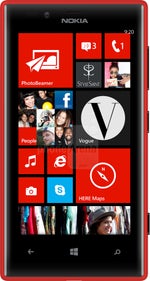















Things that are NOT allowed:
To help keep our community safe and free from spam, we apply temporary limits to newly created accounts: